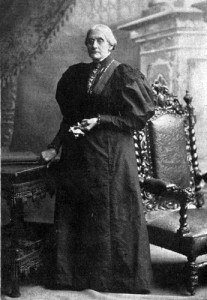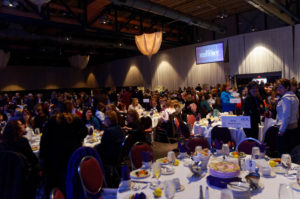Behind every stride towards Civil Rights, throughout was an individual who swayed opinions, demanded equality, and inspired. Most often, they did this through a series of speeches. The National Susan B. Anthony Museum and House has collected several historical speeches from suffragists and abolitionists for performance at VoteTilla, now available to read in full.
Susan B. Anthony’s Return to the “Old Union” speech; 1863
Susan B. Anthony’s “Is it a Crime to Vote?”; 1872-1873
Susan B. Anthony’s “Woman Wants Bread, Not the Ballot”; 1880-1890
Susan B. Anthony’s “Social Purity”; 1895
Clara Barton from The Life of Clara Barton, by Percy Harold; 1898
Excerpts from Amelia Bloomer’s “Most Terribly Bereft”; 1855 (given in Council Bluffs, Iowa)
Amelia Bloomer’s “Woman’s Right to the Ballot”; 1895
Carrie Chapman Catt’s “The Crisis”; 1916 (Atlantic City, New Jersey)
Frederick Douglass’ “Woman Suffrage Movement,” printed in New National Era; 1870
Jean Brooks Greenleaf’s address to the House Judiciary Committee; 1892
Sarah Grimké’s Letters to Mary Parker; 1837
Hester Jeffrey’s Eulogy of Susan B. Anthony
Samuel May’s “The Rights and Condition of Women,”; 1846
Lucretia Mott’s “Discourse on Woman”; December 17, 1849
Gerrit Smith’s speech at the Syracuse National Convention; 1852
Elizabeth Cady Stanton’s Seneca Falls Keynote Address; July 19, 1848
Elizabeth Cady Stanton’s address on Woman’s Rights; September 1848
Lucy Stone’s speech to the Women’s Rights Convention; 1848 (given in Seneca Falls, New York)
Mary Church Terrell’s “The Progress of Colored Women”; 1904
Sojourner Truth’s “Ain’t I A Woman?” at the National Women’s Rights Convention; 1851
Sojourner Truth’s “Mob Convention” speech; 1853 (given in NYC, New York)
Sojourner Truth’s speech at the American Equal Rights Association meeting; 1867
Angelina Grimké Weld’s speech at Pennsylvania Hall; 1838
Ida B. Wells’ Class Legislation; 1893
Ida B. Wells’ “How Enfranchisement Stops Lynchings” in Original Rights Magazine; June 1910
Fannie Barrier Williams’ “The Colored Girl”; 1905
 On March 13, 1906, at forty minutes past midnight, Susan B. Anthony died at the age of 86 in her own bed on the second floor of the house on Madison Street, her home of 40 years.
On March 13, 1906, at forty minutes past midnight, Susan B. Anthony died at the age of 86 in her own bed on the second floor of the house on Madison Street, her home of 40 years.
